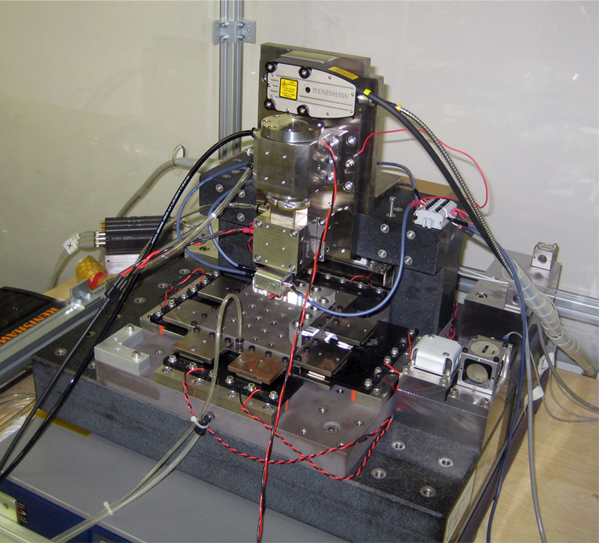Recent advances in science and industry have led to increased demands for equipment that can measure three-dimensional (3D) geometries on the micro- and nano-scale, over a large area. However, it has been difficult to realize long range measurements up to the millimeter scale measuring range and above while also maintaining an resolution on the order of nanometers.
Now this goal could be in reach, thanks to a 3D form-measuring system developed by Hidenori Shinno, Hayato Yoshioka and co-workers in Tokyo Institute of Technology’s Precision and Intelligence Laboratory. The new design makes use of ultra-precision positioning tables and a probing system based on the same principles as a scanning tunneling microscope (STM).
By using linear motors, aerostatic bearings, and laser interferometers, the researchers ensured that the moving bodies of the system are driven, supported and measured in a non-contact condition. As a consequence, the system achieves nanoscale motion control over a relatively large measuring space of 18 x 18 x 5 cubic millimeters.
The researchers performed an experimental evaluation of their system by measuring a height standard specimen with 18 nanometer steps and a high precision steel sphere of 12.7 millimeter diameter. Their results confirmed that the form-measuring system can reveal 3D forms on the nanometer resolution.
Another benefit of the new system is that it provides various applications at the same time. It can allow researchers to observe the nano structure of their samples as well as measuring topographical profiles on the mesoscale. It can even help to identify machining errors on the millimeter scale.
Reference
- Authors: Hidenori Shinno, Hayato Yoshioka, Toshimichi Gokan, and Hiroshi Sawano.
- Title of original paper: A newly developed three-dimensional profile scanner with nanometer spatial resolution.
- Journal, volume, pages and year: CIRP Annals – Manufacturing Technology 59, Issue 1, (2010), pp.525-528.
- Digital Object Identifier (DOI): 10.1016/j.cirp.2010.03.022
- Affiliations: Precision and Intelligence Laboratory, Tokyo Institute of Technology.
- Department website: http://www.upm.pi.titech.ac.jp


A compact nano profiler developed at the Precision and Intelligence Laboratory.
. Any information published on this site will be valid in relation to Science Tokyo.



